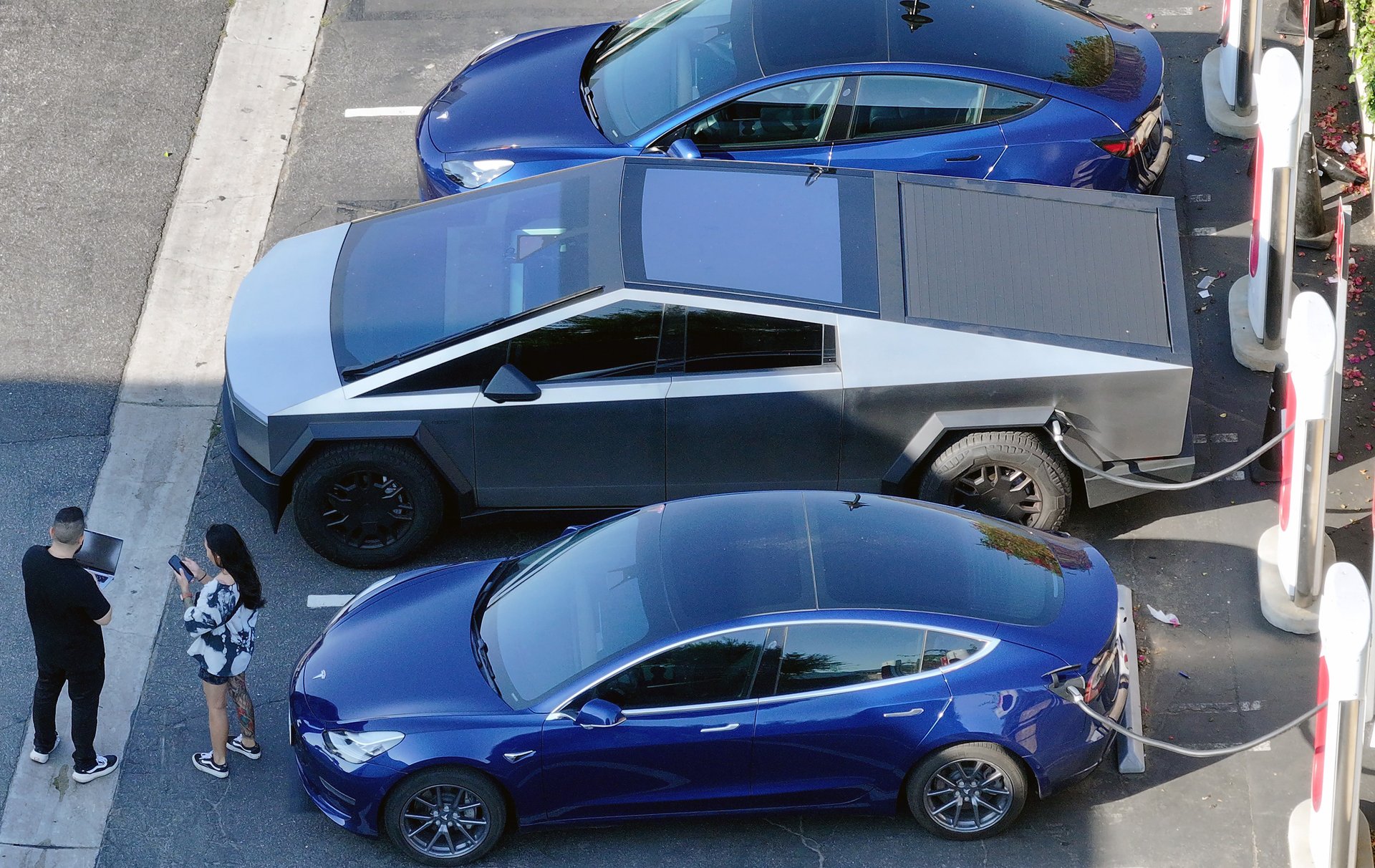Tesla just got a win — barely. The Cybertruck helped
The automaker delivered almost 463,000 EVs last quarter, narrowly beating expectations

Tesla (TSLA) delivered slightly more electric vehicles between June and September than Wall Street analysts had expected, partially due to the increased popularity of the Tesla Cybertruck.
Suggested Reading
The Austin, Texas-based automaker said it sold 439,975 Model 3 compact cars and Model Y SUVs between April and June, compared to the 436,000 expected by analysts, according to estimates compiled by FactSet (FDS). That’s also an improvement compared to a year earlier when Tesla delivered 435,059 cars.
Related Content
Tesla also delivered 22,915 other EVs, which includes sales of the Model X crossover SUV, Model S sedan, and the Cybertruck, an electric pickup released for delivery by Tesla last November that recently became the best-selling vehicle priced over $100,000. Wall Street had expected deliveries of 16,000 Model S and Model X EVs, slightly more than a year earlier, although Tesla no longer breaks out that data.
Although it’s unclear exactly how many Cybertrucks have been sold since last November, a recall in June revealed that 11,688 units had been put on the road, a big leap compared to the 3,378 known to be on the road in April after a different recall. According to Automotive News, citing data from S&P Global Mobility, 5,175 Cybertrucks were delivered in July alone; that’s about a fifth of overall sales in Tesla’s “other models” category for the entire quarter.
All in all, Tesla delivered 462,890 electric vehicles to customers last quarter, a 6% increase compared to 435,059 units delivered during the third quarter of 2023. Wall Street had expected deliveries of about 462,000 units, according to FactSet estimates.
The company also made 443,668 units of the Model Y and Model 3, as well as 26,128 units of all other models. That comes out to a total of 469,796 units, compared to the 435,059 units made during the third quarter of 2023.
Tesla benefitted from a series of incentives it introduced in China amid rising competition, slugging spending, and flagging economic growth. That has included zero-interest loans of up to five years, discounts on selections of paint. Sales also benefitted from Beijing’s subsidies for EVs and Tesla’s Model Y being approved for government purchases.
The company’s stock fell by almost 6% after sales were released, partially because several “whisper” estimates had forecast deliveries in the range of 465,000 to 470,000 vehicles. Barclays (BCS), for one, had expected deliveries to top 470,000, telling investors in a note that the beat could “drive further strength of the stock” ahead of investor events later this month.
Tesla will hold its third-quarter earnings call on Oct. 23, two weeks after the automaker’s long-awaited robotaxi event, which was delayed after CEO Elon Musk demanded “an important design change.” Musk has described launching a network that’s a “combination of Airbnb (ABNB) and Uber (UBER),” pitching a product that allows Tesla owners to make money while sleeping, since their car would be called into service remotely through an app.
“We believe Robotaxi Day will be seminal and historical day for Musk and Tesla and marks a new chapter of growth around autonomous, FSD, and AI future at Tesla,” Wedbush analyst Dan Ives, a Tesla bull, wrote in a note Tuesday, adding that he expects to hear more about the robotaxi and advancements in Tesla’s AI technology at the Oct. 10 event.
Ark Investment Management has forecast a scenario that could bring Tesla to $2,600 per share, with 90% of the company’s value and earnings attributable to robotaxis by 2029. However, if such a network isn’t operable by then, Ark’s forecast drops to $350 per share.